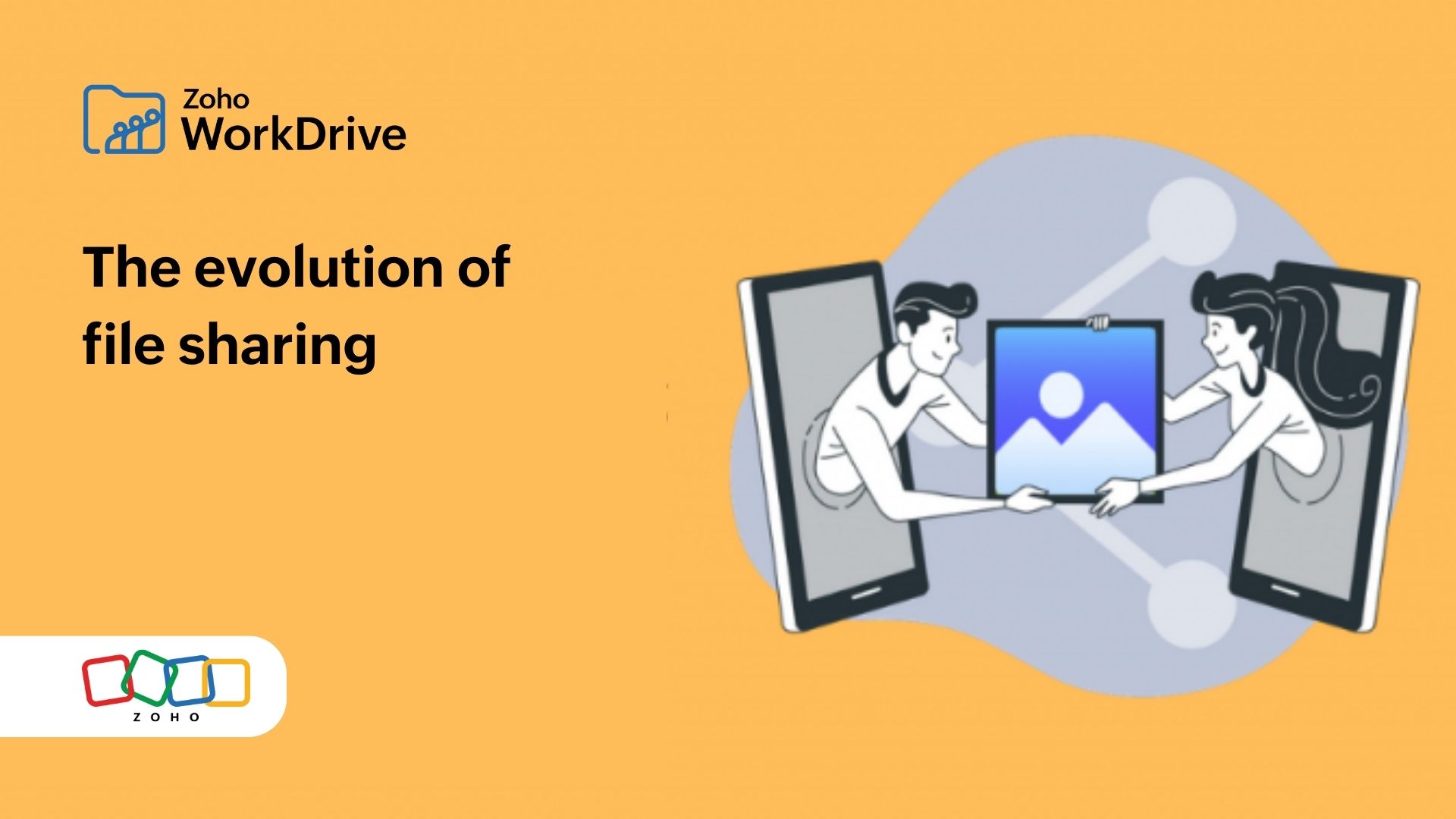- HOME
- Work Culture
- File sharing: then and now
File sharing: then and now
- Last Updated : December 17, 2023
- 619 Views
- 3 Min Read

Rapid advancements in technology have made it possible to share files, documents, photos, and even long videos in a matter of seconds. And it’s not just the actual transfer of files alone. Today, you can manage what you share, set permissions, and even get stats on who, when, and how the information you shared was used. That being said, it wasn’t always like this. Over the years, the process of file sharing has evolved and transitioned through many phases to get to what it is today.
Then
Let’s start with how it was done back in 4000 BC. Cuneiform was one of the earliest systems of writing invented by the Sumerians. Clay tablets were used as writing material and the wedge-shaped strokes were made in the soft clay using a slanting stylus. These clay tablets constitute one of the ways in which information was shared in ancient times. Until bound books were invented and became commonplace, information was managed in bound files of sheets and tablets.
Then came the use of pigeonhole message system in the late 1700s. The pigeonhole messagebox was a mailbox used for internal communication in the workplace or educational settings. Documents would be filed in envelopes and placed in a person’s cubby for them to collect, and they would in turn respond by putting an envelope in the sender’s cubby. Interestingly, this method of sharing information is still used by the postal offices in the United Kingdom, banks, courts, and some big firms.
Eventually, offices in the mid-1800s got their own filing cabinets. Files came in multiple colors, materials, and sizes and were used for everything. Even today, files can be found in every office cubicle and stacked up on every work desk. Until the 1980s, file sharing meant physically handing over the document to a colleague, with the risk it could get lost, forgotten, or left behind.
And then came the 1980s and the popularization of File Transfer Protocol (FTP). With FTP, users could transfer files securely between computers by accessing the same standard network protocol.
The advent of the internet, among other things, revolutionized the way information was shared. Instant messaging and various file-sharing sites became popular mediums to share documents, photos, and music. These were, however, known for their slow download speeds and were dependent on the speed of the internet back then.
Now
The late 2000s saw the beginning of the cloud computing era. Solutions like Dropbox, Amazon, and iCloud that catered to consumer cloud storage appeared. These tools focused not just file sharing, but on the entire file management process.
Moving to the cloud unveiled a world of convenience for organizations worldwide with data security and compliance making it to the top of common priorities. Information could be accessed from anywhere, at any time, without worrying about storage limits. Employees did not have to carry around USB drives or external hard drives anymore. Everything they needed could be accessed from a single location from any computer. However, most of these tools were built for individual consumer storage and failed to cater to the needs of team-based work culture.
This last decade saw the rise in Content Collaboration Platforms (CCP) due to the swift transformation in the nature of work and work culture. Many workplaces have become more casual, with a horizontal organizational structure where teamwork takes the spotlight. While most of the previous platforms tacked on collaboration features to a product that was built for individual use, some tools like WorkDrive were built from the ground up with teamwork as its focus.
These tools let you manage company data efficiently by creating Workspaces or Team Folders that bring all stakeholders to a common virtual space for seamless collaboration. Organizations can set granular access controls at file, folder, and even subfolder levels. Employees are assigned different roles, and access permissions are granted based on these roles. Attributes can be added to every externally shared file link and they can be secured with passwords, expiry dates, download restrictions, and more. Admins can get a detailed audit trail and maintain complete control over company data.
And that’s not all. With AI being introduced, advanced search through OCR and Object detection is now possible.
From ancient library systems to AI-enabled tools, file sharing has undergone many changes and assumed many avatars. Given the rate of evolving technologies, this is certainly not the end. What do you think is next?


